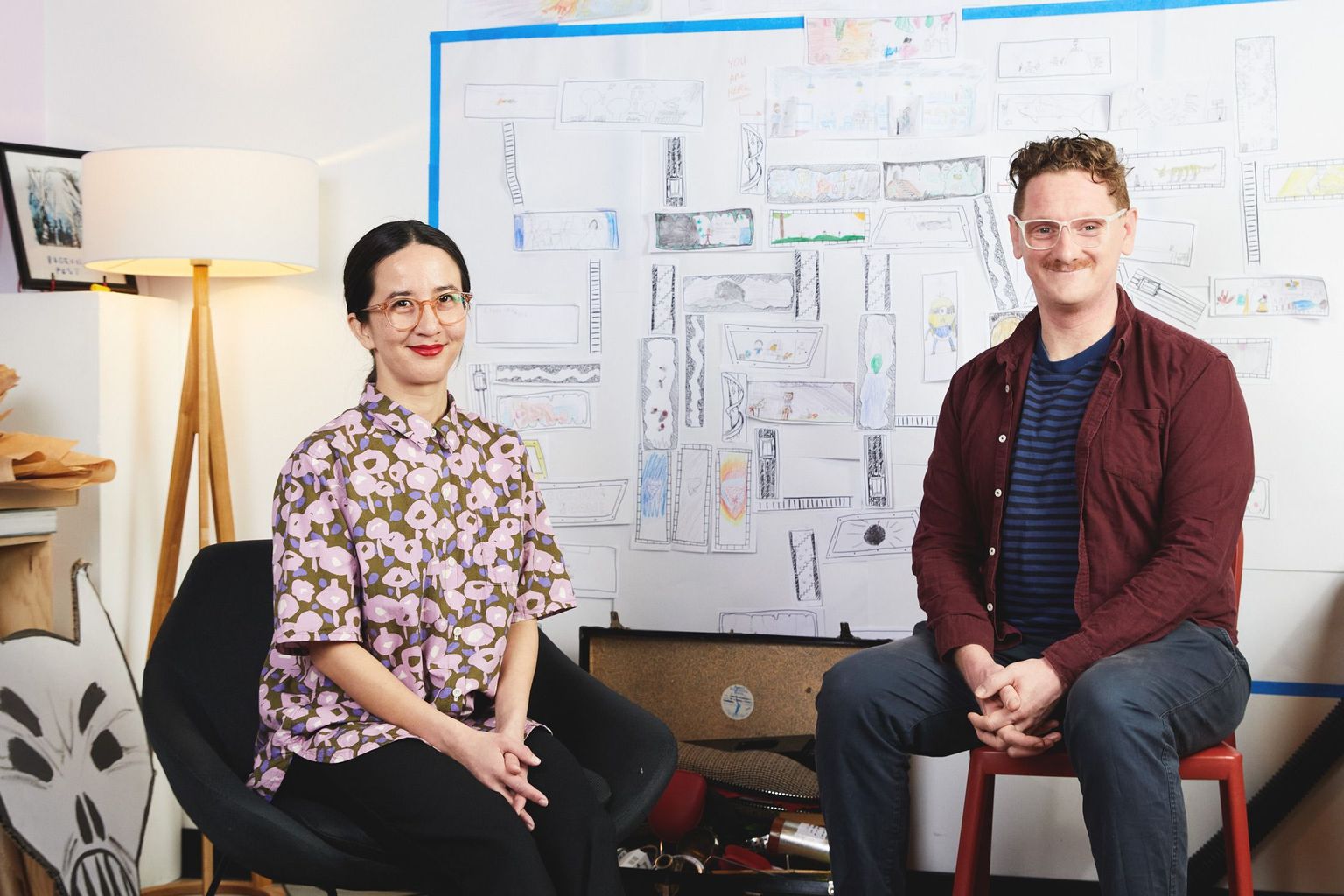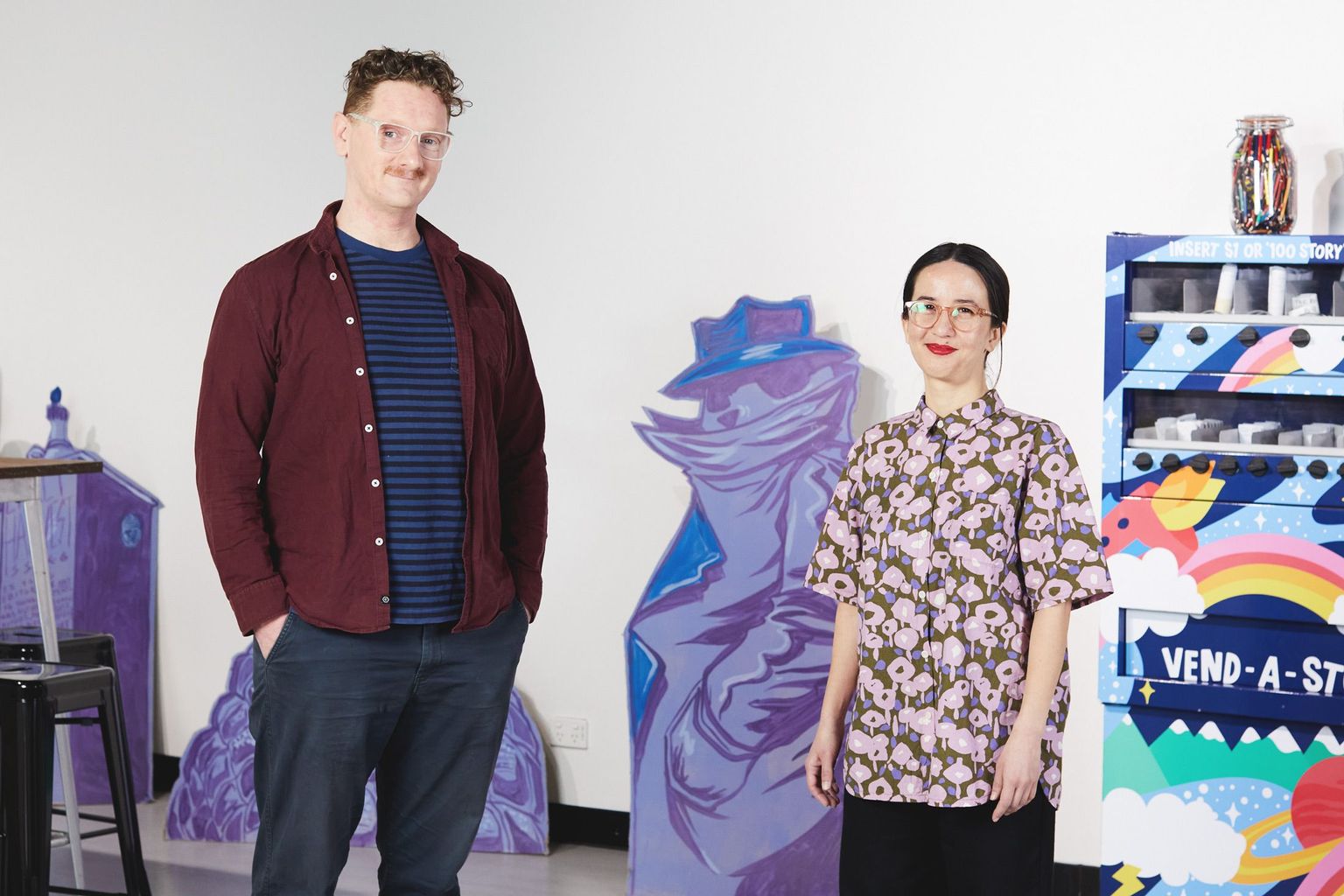In this hundred-storey building, telling tales is much more than child’s play
At a children’s centre in Melbourne’s west, educators are getting kids ready for the future by teaching storytelling as a core life skill.

Photo by Peter Tarasiuk
Moving offices is never easy. But for Jessica Tran and her workmates, the task has been positively Herculean. The challenge was in finding a place that met the strict requirements of their workplace: wherever they ended up, the building would need to extend 99 levels below ground (and come equipped, ideally, with a trapdoor). Such are the constraints when your organisation is named 100 Story Building; your floorplan is kind of non-negotiable.
That, at any rate, is the official story—the one Tran and co tell the children who file through the organisation’s doors for storytelling lessons and workshops. The unofficial story—the one even the adults in the room don’t like to say out loud—is that the 99 subterranean levels are made up, and function as thought-starters for the children, who are often asked to imagine what might happen on the levels beneath their feet.
That reality may be less interesting, but it certainly made for an easier move. When I spoke with Tran in August, the team had just finished moving into an inconspicuous office block a few kilometres down the road from their old headquarters in Footscray, a suburb in Melbourne’s inner west. For Tran, the location was important. “We opened in Footscray for a reason,” she says, nodding towards the suburb’s multicultural and working-class background. Wherever 100 Story Building went next, it needed to be true to its roots.
Tran, who worked in children's publishing before changing careers, co-founded 100 Story Buiding with a simple goal: to teach marginalised children and young people how to tell stories. The idea took form at the 2007 Melbourne Writers Festival, when co-founders Lachlann Carter and Jenna Williams attended a talk by Dave Eggers, the American author behind cult publishing house McSweeney's. “Instead of talking about his books, he talked about a writing centre he had set up in San Francisco called 826 Valencia,” Tran remembers. “And that seeded the initial idea, to do something like this in Melbourne.”
The idea, as Eggers described it, was to create a space where children from disadvantaged communities could come to get help with everything from their homework to penning a novel, rubbing shoulders with volunteer teachers and established writers who were happy to share their craft. But where 826 Valencia’s motivation was to improve literacy and writing skills, 100 Story Building was more ambitious: Tran and co wanted to show children the benefits of living a more creative life. And according to recent research, the benefits are many.
In business and engineering it's called innovation. In scientific theory it’s called a hypothesis. But it’s all just imagination.
“There is a wealth of research that shows if you support children’s creativity, if you help them develop an identity in their writing and their expression, that it leads to better outcomes for them in their education and beyond,” says Tran, who is completing a Ph.D. in creativity and education. Because children, like all humans, are hardwired to make sense of the world through stories, Tran says it made sense to structure their programs around storytelling. This principle is at the core of each of 100 Story Building’s offerings, which range from after-school creativity classes to teacher workshops to Early Harvest, an annual fiction anthology written, published and edited by children.
While some of these projects result in written works—children often start by writing comics and end up with whole novels—Simon Conlon says these are better seen as byproducts. As 100 Story Building’s program manager, it’s his job to build the organisation’s storytelling workshops and classes and deliver them in an age- and culturally-appropriate way. “Sometimes we focus on using pictures rather than writing, so as not to let the English language or finding the right word become a barrier,” he says, noting the proportion of his students who speak up to three or four languages at home, and emphasising the organisation’s emphasis on creativity over literacy.
“It’s all about supporting children and young people to have the agency to put forward their own ideas, to say they’re as valid as anyone else’s. When you’re creating a narrative, you’re the expert. Whatever ideas you’re having, they’re right—they can’t be measured against anyone else’s.”
Which isn’t to say there aren’t concrete things to learn. At Conlon’s workshops, children as young as six are taught the basic mechanics of storytelling, starting with the nuts and bolts of things like story arcs and three-act structures. “Right down to prep and grade one, we ask the kids to think about the start of their story, what’s the top of the curve, what’s the end? Then we actually get them to draw a big curve and chart out what their story really is on paper.”
The older the students, the more advanced the theory. “When we get up into high school, we start to talk about inciting incidents and rising actions,” Conlon says, employing phrases that make 100 Story Building sound more like a Robert McKee masterclass than an after-school program. “Young people often have instinctive senses of how to capture someone’s attention with a story, they just need to be asked the right questions. What’s working? What could they upgrade? What will make this a bit more dramatic and raise the tension?”
If it’s easy to picture a group of kids enjoying themselves in this process, it’s just as easy to imagine an overworked parent or teacher complaining that their time would be better spent honing the three Rs or doing homework; after all, school is meant to prepare you for the real world, not coddle you in a blanket of make-believe. It’s an argument that Conlon swats away. “What we’re doing in these workshops is supporting children and young people to become the next generation of adults,” he says. When these kids grow up, they’re going to face next-generation challenges—ones that can’t be solved with simple reading, writing or arithmetic. At that point, Conlon says, creativity will be as useful as any so-called ‘hard’ skill. “I mean, it already is. But it’ll only be more so in the future.”
“All imagination is is taking two dots that exist in the real world and matching them up in this other space inside your brain,” Conlon continues. “In business and engineering that’s called innovation. In scientific theory it’s called a hypothesis. But it’s all just imagination. And that’s what we’re kickstarting here with storytelling.”

Says Tran, “We work with children and young people to amplify their voices and support their confidence, their creativity, their sense of belonging”.
Tran agrees. “Throwing ideas around and coming up with new ways of doing things through storytelling is a skill you need to live the life you want to live.” She points to studies that show a strong correlation between nurturing creativity in young people and positive academic, employment and interpersonal outcomes later in life.
For Conlon, it’s the less easy-to-pinpoint effects of storytelling on children that get him excited—their capacity to broaden a child’s horizons, for instance. But he’s also quick to point out some of the concrete benefits. “One of our board members used to be a lawyer, and he saw from his experience that if you have two kids involved in a disagreement, and one is eloquent enough to tell their side of the story while the other lacks the confidence, you’ll get a one-sided picture of what happened, and a one-sided outcome.” While Conlon acknowledges that may be an extreme case, he also says it’s a clear example “of why everyone should have the skills to express stories. It’s a life skill.”
Tran is similarly expansive in her ambitions for 100 Story Building, which turns 10 next year. “There are some students who don’t know that a creative life is possible,” she says. And while Tran’s days are spent working to change that fact one student at a time, she says the ultimate goal is more wholescale change. “I want to test how possible it is to have schools and teachers do things differently in their everyday learning, so that children get the opportunity to be creative as part of their regular education.”
To do that, the education system might have to change its approach to creativity, folding it into the three Rs rather than setting it off to the side in formalised art classes. But with systematic change taking as long as it does, and schools already under strain to deliver the current curriculum, Tran acknowledges that goal may be out of reach for the time being. “One of the reasons why 100 Story Building began was because teachers didn’t feel they had the resources to do this kind of work.”
If the situation changes, they may no longer need to act as that resource. Until then, Tran, Conlon and the rest of the 100 Story Building team will be here in Footscray, guiding children through the lower 99 levels of their minds, before unleashing them on the real world.
